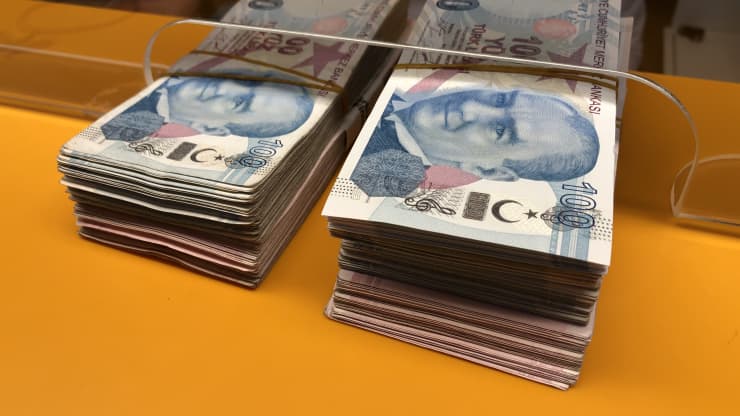
Turkey’s currency crisis accelerated on Friday as it plunged 8% to a new record low, gripped by concerns over an inflationary spiral brought on by President Tayyip Erdogan’s unorthodox plan to slash interest rates in the face of soaring prices.
The lira hit 17.0705 to the dollar, triggering direct central bank intervention in the market to prop up Turkey’s battered currency — its fifth effort this month to address what it called “unhealthy” prices.
The bank’s dollar-buying trimmed the lira’s losses to 16.5 by 1116 GMT. At this level it has still lost 55% of its value this year — including 37% in the last 30 days alone — deeply unsettling the major emerging market economy.
Erdogan’s decision to push through 500 basis points of monetary easing since September, including another big cut on Thursday, has sent inflation soaring above 21%. It is likely to blow through 30% next year due to ballooning import prices and an emergency hike in the minimum wage, economists say.
“With Erdogan seemingly becoming more entrenched in his anti-interest rate stance, the longer the currency crisis lasts, Turkey could be beyond the point of no return,” said Patrick Curran at Tellimer, describing the lira as totally disconnected from fundamentals.
“We are still not ready to catch the falling knife,” he said of the possibility of re-investing in Turkish assets. “As long as Erdogan is at the helm there is nothing to prevent the lira from continuing to depreciate.”
The knock-on effects have been fast and painful as Turks watch their savings and earnings dissolve.
Erdogan announced a 50% hike in the minimum wage, to 4,250 lira ($275) per month next year. But that is expected to boost overall consumer price inflation by 3.5 to 10 percentage points.
The hike affects some six million workers but, given the sharp lira depreciation, the new minimum wage is still lower than the equivalent $380 a year earlier.
“We believe that the current mix of policies is essentially unsustainable,” Maxim Rybnikov, director sovereign ratings for the EMEA region at S&P Global Ratings, said in a webcast.
Policy framework reassessment
The rapid and staggering market meltdown has outstripped Turkey’s currency crisis in 2018, which sparked a deep but brief recession.
Turkey’s dollar-denominated sovereign bonds faced pressure, with some longer-dated issues down as much as 1.3 cents, according to Tradeweb. Spreads over U.S. Treasuries widened to 579 basis points on the JPMorgan EMBI index having added 28 bps from last Friday’s close.
Five-year credit default swaps rose 3 bps from Thursday close to 529 bps, their highest since Dec. 6, data from IHS Markit showed.
The central bank’s 100 basis point rate cut on Thursday sent Turkey’s real rate deeper into negative territory.
The bank signaled it would pause the easing cycle to monitor its effects in the next three months, when “all aspects of the policy framework will be reassessed in order to create a foundation for a sustainable price stability,” it said.
“Possibly that means other interest rate channels could be under consideration,” Rybnikov said. The central bank has in the past used an interest rate corridor in setting rates.
If the rate-cutting cycle were to continue the possibility of capital controls could be on the rise, Rybnikov added. “This is not our base line…we believe that as a policy measure, they would be used as a measure of last resort.”
Though Erdogan has rebuffed pleas even from within his government to reverse course, traders predict it will have to come soon. The 10-year benchmark yield has nearly doubled to 22.5% from around 12% at the start of the year.
Wall Street bank JPMorgan predicted a massive 12 percentage point rise in interest rates next year, far more than any of Turkey’s peers.
The central bank has been under pressure from Erdogan to slash rates to boost economic growth, lending and exports under his new economic plan.
Economists and opposition lawmakers have widely criticized the policy as reckless.
The central bank has intervened four times in the currency market in the last two weeks, selling dollars to slow the lira slide and eating into its already depleted foreign reserves.
The lira has also plunged 51% against the euro and 54% against sterling this year.